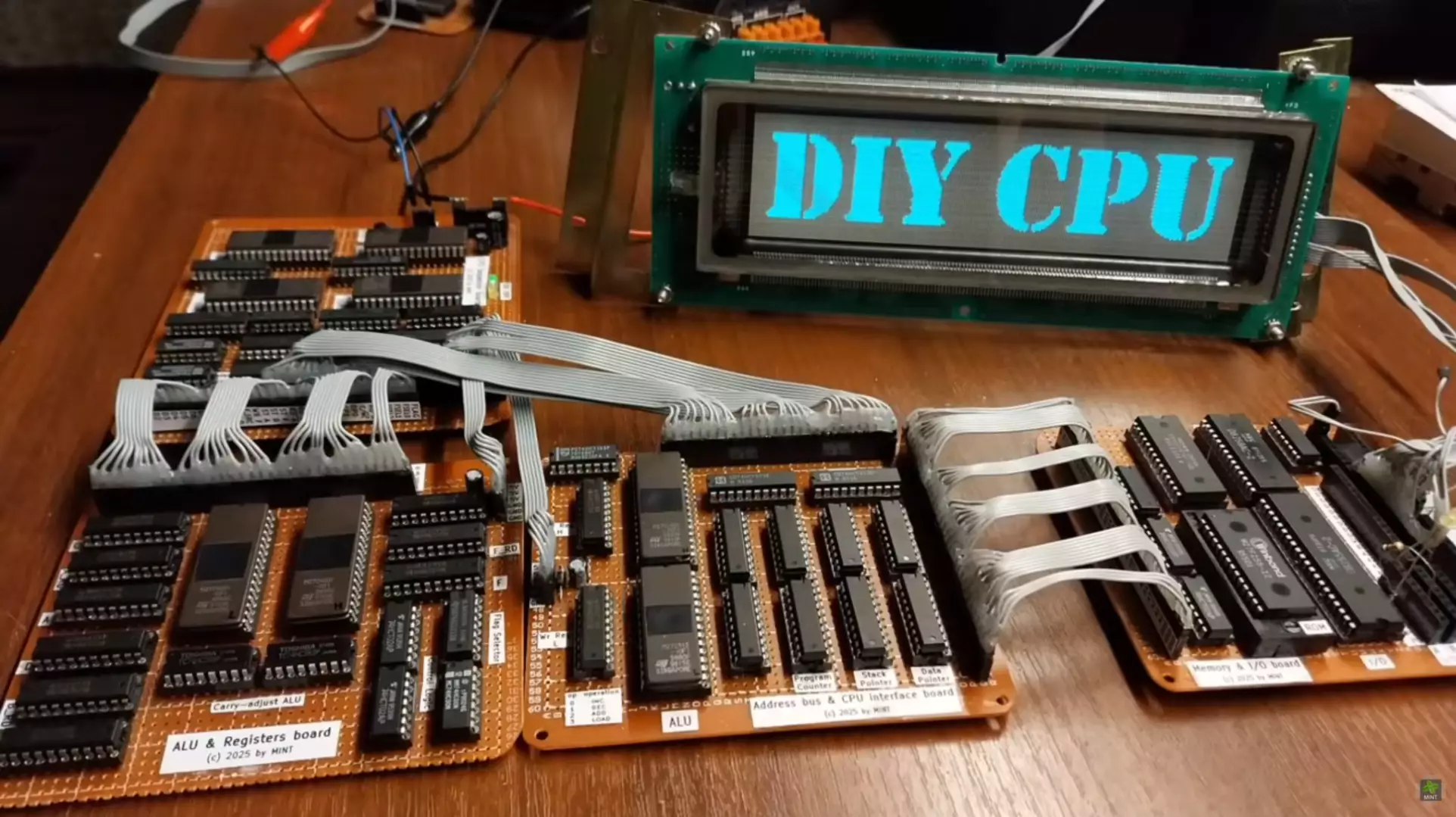In an era where technology advances at an unprecedented pace, the urge to understand the foundations of computing persists among enthusiasts. A standout example of this curiosity-driven exploration is a Polish YouTuber, known as MINT, who embarked on an ambitious journey: constructing a fully operational CPU entirely from scratch using vintage components. This endeavor isn’t merely a nostalgic nod to early digital engineering; it’s a compelling testament to the potential lying dormant in obsolete hardware. His project underscores an enduring truth—if you truly want to understand how computers operate, there’s no substitute for manual assembly and hands-on experimentation. MINT’s meticulous construction highlights that even in our digitally saturated world, tinkering with old parts can yields invaluable insights.
Decoding the Process: From Memory Chips to a Working Processor
What makes MINT’s project remarkable isn’t just the end product but the process itself. Over three months, he methodically collected, tested, and repurposed aging memory chips. Initially treating these components as simple control elements—like switching on lights or motors—he soon realized their potential as building blocks of a larger system. Through persistent experimentation, he devised a way to connect them in a manner that mimicked the behavior of early microprocessors, such as the Zilog Z80—a processor known for its role in 8-bit computers of the late 1970s and early ’80s.
This ingenuity required a deep understanding of digital logic, timing, and circuitry. Soldering each part with precision, MINT integrated multiple memory chips, crafting a basic CPU capable of interpreting instructions. The effort extended beyond hardware construction; he also authored the firmware, programming the CPU to interpret a series of commands. Complexity was compounded by ensuring all components interacted harmoniously, a challenge for any electronic engineer. The final hardware, dubbed the “EPROMINT CPU,” was not just a theoretical idea but an operational machine—demonstrating that with patience and knowledge, even relic parts can be resurrected into functioning entities.
The Philosophy Behind DIY Computing
In an age dominated by highly integrated, specialized chips manufactured on an industrial scale, MINT’s hands-on approach raises thought-provoking questions about the nature of technological progress. His project exemplifies a form of reverse-engineering that emphasizes comprehension over convenience. While modern processors are closed systems—complex and inaccessible to most—this project invites a broader appreciation for the fundamentals of digital logic. It promotes the idea that technological mastery doesn’t require multimillion-dollar laboratories; curiosity, patience, and a willingness to learn are often enough.
Furthermore, MINT’s success challenges the misconception that building a computer or CPU from scratch is a prohibitively complex task reserved for professionals or large companies. It’s an empowering statement: fundamental understanding is achievable, and by doing so, hobbyists and students can cultivate deeper insights into how their devices truly function. His demonstration, where a modest CPU played scenes from a classic film, exemplifies the potential for creativity, education, and innovation stemming from an earnest DIY spirit.
Implications for the Broader Tech Community
This project not only has personal significance for MINT but also sends ripples throughout the tech and gaming communities. In an era where hardware is often viewed as a disposable commodity, his work champions preservation—not just of vintage parts but of knowledge. It promotes sustainability by showcasing that old components can have a second life in educational projects.
Additionally, the effort acts as a catalyst for curiosity-driven learning. It can inspire students, hobbyists, and even professionals to revisit the basics of digital design, fostering a deeper appreciation for the hardware that powers modern devices. For the gaming community especially, understanding the roots of computing can provide valuable context for the evolution of hardware and software, enriching the experience of nostalgia and innovation simultaneously.
While building a processor from scratch isn’t a practical enterprise for everyday use, the philosophy behind such projects is invaluable. It encourages a mindset that values comprehension, perseverance, and creativity—traits that are essential for continuous technological evolution. MINT’s achievement reminds us that sometimes, looking back to the origins of computing can push us forward more meaningfully than solely chasing cutting-edge advancements.

